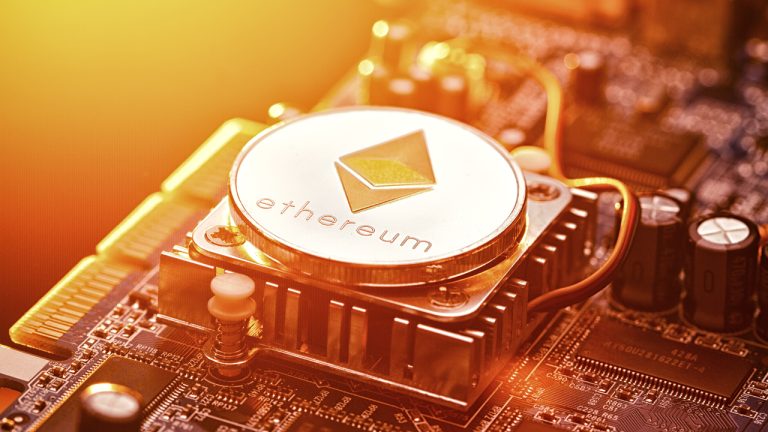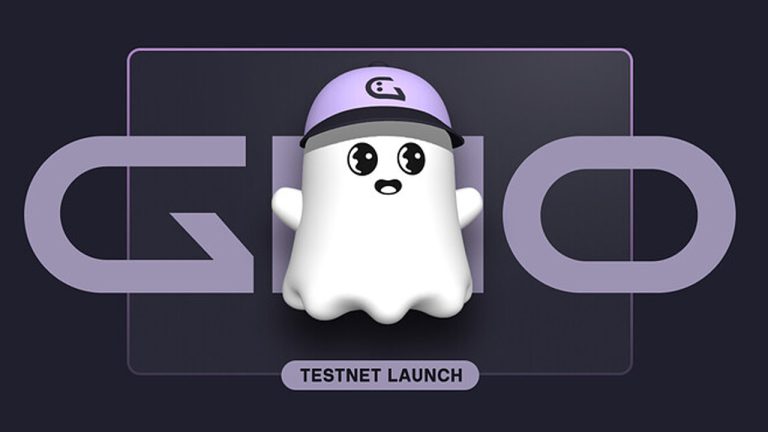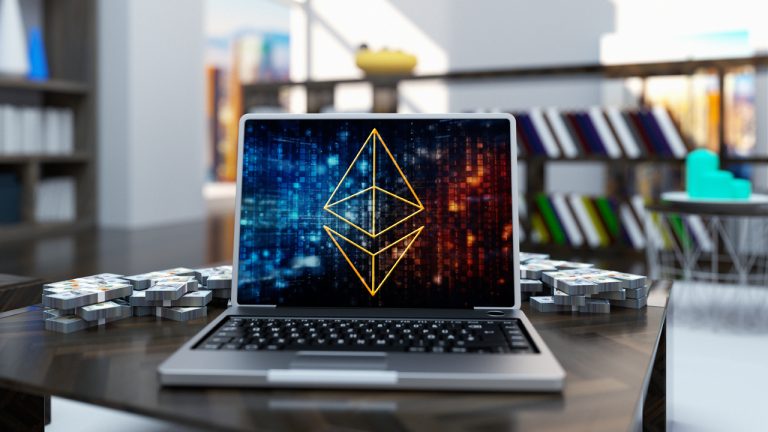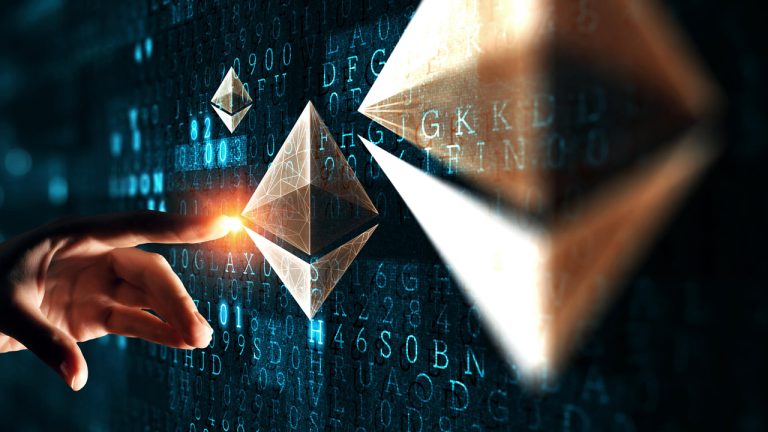 During the Execution Layer Meeting streamed on March 16, 2023, Ethereum developers announced that the blockchain is scheduled to upgrade on April 12, in 27 days. The upgrade, known as the Shanghai-Capella upgrade or Shapella, will include the implementation of Beacon chain push withdrawals. This will enable Ethereum network validators to support withdrawal operations following […]
During the Execution Layer Meeting streamed on March 16, 2023, Ethereum developers announced that the blockchain is scheduled to upgrade on April 12, in 27 days. The upgrade, known as the Shanghai-Capella upgrade or Shapella, will include the implementation of Beacon chain push withdrawals. This will enable Ethereum network validators to support withdrawal operations following […]
The Ethereum ecosystem is edging closer to its latest milestone as the Shanghai upgrade draws near.
The Ethereum ecosystem will continue its ongoing metamorphosis as the highly anticipated Shanghai upgrade draws near. The latest preeminent smart contract blockchain protocol improvement will activate Ether (ETH) withdrawals from Ethereum’s Beacon Chain.
The Merge marked a significant milestone for the Ethereum network in 2022, with the blockchain platform shifting from proof-of-work to proof-of-stake consensus. That change introduced validators as the new “miners” of the network, with staking ETH becoming a key component in maintaining the network.
While full validators were required to stake 32 ETH to process transactions and add new blocks to the network, the broader ecosystem could stake smaller amounts of ETH to earn a share of rewards — much like an investor that puts capital into interest-bearing accounts.
Those that locked up ETH to become validators have been unable to withdraw their staked holdings from the Beacon Chain. This changes with the Shanghai upgrade, and is a major reason for the increased fanfare around the latest change to the Ethereum network.
The Shanghai upgrade features a handful of Ethereum Improvement Proposals (EIPs) in addition to activating staking withdrawals. Cointelegraph reached out to members of the ConsenSys team, the Ethereum Foundation and analytics firm Nansen to unpack all aspects of the upcoming milestone.
The upcoming changes feature two simultaneous upgrades amalgamated to encompass all facets of the upgrade.
Shanghai refers to changes to Ethereum’s execution layer, mainly enabling staked ETH to be deposited to execution layer wallets. The Shanghai upgrade requires a simultaneous change to the Beacon Chain, which has been dubbed Capella.
Justin Florentine, a staff protocol engineer for ConsenSys’ Hyperledger-Besu, further explained the combined upgrades at the execution and consensus layers:
“It is doubly named because it is the first simultaneous upgrade of Ethereum’s execution layer and consensus layer, and is highly anticipated because it will enable staked ETH withdrawals.”
Within the Ethereum ecosystem, execution layer upgrades are named after cities that have hosted Devcon events, while consensus layer upgrades are named after stars. Therefore the upcoming upgrade’s technical name is Shapella, combining Shanghai and Capella.
Nevertheless, given the focus on activating staked ETH withdrawals, the wider cryptocurrency ecosystem refers to the looming upgrade as Shanghai. As Beiko explained, Shanghai closes an important chapter in Ethereum’s evolution:
“It’s better to think of Shanghai as ‘finishing the Merge’ than related to future upgrades. We didn’t introduce withdrawals during the Merge because that upgrade was already the most complex in Ethereum’s history.”
As has been highlighted by several analysts and Ethereum developers, Shanghai features five EIPs. EIP-4895 will enable users to withdraw from the Ethereum staking contract, which had previously been locked.
Reward payments will be sent automatically to withdrawal addresses at regular intervals to validators. Users also have the option to exit staking entirely, which will return their entire validator balance.
Ethereum's Shanghai upgrade will unlock 17.6M ETH or over $28 billion. https://t.co/qt8K4Zn55y
— Cointelegraph (@Cointelegraph) March 2, 2023
Validator balances are maxed out at 32 ETH, meaning that balances above this threshold as a result of rewards do not contribute to the principal amount nor increase the weight of a validator on the network.
EIP-3651, EIP-3855, EIP-3860 and EIP-6049 are the other four elements of the network upgrade. Matt Nelson, ConsenSys Hyperledger Besu and Web3 senior product manager, highlighted the impact of each of these EIPs.
The Ethereum protocol prices gas based on how many units of work a function will require of a computer in the network. Changes to Ethereum’s gas costs often adjust to correct overpriced or underpriced operations that have central processing units doing more or less work than anticipated. Warm coinbase (3651), PUSH0 (3855) and the initcode changes (3860) are part of these corrections, according to Nelson.
EIP-3651 changes the price of accessing the coinbase address of a validator that submits and executes transactions. Validators receive fees to their coinbase address for maintaining the network. As Nelson summarized, EIP-3651 looks to lower the gas cost of accessing a coinbase address so that users that submit transactions can pay the validators directly in specific conditions:
“Regardless, this EIP corrects a previous oversight on the cost to access the coinbase address and gives some added benefits to users and developers that open up new use cases.”
EIP-3860 will have a similar effect. Developers submit initcode to the network when deploying a new smart contract. When the initcode is executed, a smart contract “bytecode” is created on-chain, running each time the contract is called, and also runs decentralized applications (DApps).
Metering initcode intends to correct the gas cost required for network nodes to process and deploy the smart contracts specified in the initcode. Validating nodes currently check that contracts are valid on deployment, which costs time and gas to complete, which the initcode EIP aims to improve as Nelson explained:
“EIP-3860 applies a new cost to the initcode that scales in correlation to the size of the ‘initcode’ to ensure handling that contract creation is costed appropriately.”
Lastly, EIP-3855 carries out a “straightforward and simple change” to the Ethereum Virtual Machine (EVM) and gas costing. The current state of the EVM does not store a value of zero on the execution stack cheaply, with developers having to use the “expensive” PUSH1 operation to set a value to zero.
Nelson highlighted that gas costs are directly linked to storage space in this instance, meaning the EVM only needs 1 byte to store a single zero, while more than 1 byte is required to store a bigger number from the PUSH1 operation:
“This change creates a new PUSH0 opcode, which is cost for 1 byte of data storage (less than PUSH1), and will bring gas costs for developers (and ultimately users) down.”
Beiko also reiterated that Ethereum Virtual Machine object format EIPs initially included in the Shanghai upgrade have been removed from the event.
The effect of the Shanghai upgrade on cryptocurrency markets and the value of ETH is another pertinent question that is perhaps more difficult to answer.
Andrew Thurman, an analyst at blockchain analytics platform Nansen, told Cointelegraph that the upgrade would have significant ramifications for supply flows and price of ETH, given that staking creates fundamental changes to Ethereum’s market structure:
“Some believe that a successful network upgrade will spur more deposits, which would lead to bullish market activity. Others, meanwhile, believe that large portions of the staked ETH supply — now in excess of 17.5 million ETH — will be withdrawn and sold.”
Simon Dudley, a ConsenSys senior blockchain protocol engineer, summed up a shift in focus for the Shanghai upgrade to prioritize validator withdrawals. This meant that the implementation of certain EIPs was shifted further down the timeline to limit risks of further delays to the upcoming upgrade:
“For this reason, there was a strong desire among the core developers to prevent the Shanghai upgrade from becoming overly complicated.”
Several of these EIPs have been pushed back to the Cancun upgrade, which will follow Shanghai later in 2023. This includes improvements that will lay the foundation for sharding, namely “Proto-Danksharding” EIP-4844.
Dudley noted that Shanghai intentionally excluded foundational sharding work, but work on EIP-4844 has continued in parallel. He also concedes that the deployment of Shanghai may well influence the ongoing work on sharding in the months to come:
“Shipping the Shanghai upgrade may have an impact on sharding because it frees up developers who were working on Shanghai to focus on the more complicated series of sharding upgrades, known as ‘The Surge.‘”
The Shanghai upgrade is scheduled to take place on the Ethereum mainnet in early April. The original date was pushed out from March 2023, with the Goerli test network — which allows for development testing before mainnet deployments — carrying out the Shapella upgrade on March 14.

The final dress rehearsal for Shanghai has been slated for a Mar. 14 launch, while the real thing will happen a few weeks later.
Ethereum developers have pushed back the highly-anticipated Shanghai hard fork by approximately two weeks.
Initially estimated for late March, the Shanghai upgrade will now likely be deployed sometime within the first two weeks of April. The delay was announced at an Ethereum developer meeting on Mar. 2.
During the meeting, core developers came to the consensus that the hard fork would occur about a fortnight after the Goerli testnet launch, which has been slated for Mar. 14. The Goerli testnet will be the final dress rehearsal for the Shanghai hard fork before it is rolled out on the mainnet.
So looks like Goerli testnet is getting upgraded to Shapella
— terence.eth (@terencechain) March 2, 2023
Epoch: 162304
Time: 3/14/2023, 10:25:36 PM UTC
See ya on the other side!
Ethereum core developer and project coordinator, Tim Beiko, said “for mainnet we usually want to give people at least two weeks after the announcement,” before adding, “so imagine Goerli happens on the 14th, everything goes well, on the 16th we agree to move forward with mainnet — I think the earliest that puts us is like the first week of April.”
Beiko noted in a Twitter thread on Mar. 2 that they did not agree to a mainnet date explicitly, but they will "probably" set a date during the next developers meeting on Mar. 16, "assuming things go well on Goerli."
We didn't agree to a mainnet date explicitly, but assuming things go well on Goerli, we'd probably set a date on the next ACDE (Mar 16).
— timbeiko.eth (@TimBeiko) March 2, 2023
The Shanghai Capella (also dubbed Shapella) upgrade to Goerli will be the last chance for Ethereum clients and staking providers to ensure the Shanghai hard fork can go through smoothly when it launches on the mainnet.
The long-awaited Shanghai mainnet upgrade will allow the phased withdrawal of Ethereum staked from the Beacon Chain.
To maintain network stability and security, ETH withdrawals will be dynamic and dependent on how many validators there are exiting at the time. Validators must undergo a two-stage process involving an exit queue and a withdrawal period so it will happen gradually over time.
There are currently 17.1 million ETH staked on the Beacon Chain representing just over 14% of the entire supply. At current asset prices, it is valued at around $28 billion.
Related: Ethereum testnet successfully forks in Shanghai upgrade rehearsal
Furthermore, Shanghai has also been considered bullish for liquid staking providers. Currently, staked ETH is locked on the Beacon Chain and has been since December 2020 when the Ethereum consensus layer was launched.
Liquid staking platforms such as Lido offer more flexibility and better yield opportunities on staked ETH so may see an influx of collateral in the months following Shanghai.
 Aave Companies, the firm behind the decentralized finance (defi) project Aave, has announced the launch of a stablecoin called GHO on the Ethereum testnet network Goerli. The codebase is available on Github and has undergone audits by Open Zeppelin, Sigmaprime and ABDK. Aave Invites Programmers to Test GHO Before Mainnet Deployment On Thursday, Aave Companies […]
Aave Companies, the firm behind the decentralized finance (defi) project Aave, has announced the launch of a stablecoin called GHO on the Ethereum testnet network Goerli. The codebase is available on Github and has undergone audits by Open Zeppelin, Sigmaprime and ABDK. Aave Invites Programmers to Test GHO Before Mainnet Deployment On Thursday, Aave Companies […] Ethereum core developers plan to activate the “Shapella” transition through the Zhejiang public testnet on Feb. 7, 2023, according to Tim Beiko of the Ethereum Foundation. If successful, Beiko said the Sepolia testnet could follow two days later, followed by the Goerli testnet. He noted that the testnet has a faucet, block explorer, and staking […]
Ethereum core developers plan to activate the “Shapella” transition through the Zhejiang public testnet on Feb. 7, 2023, according to Tim Beiko of the Ethereum Foundation. If successful, Beiko said the Sepolia testnet could follow two days later, followed by the Goerli testnet. He noted that the testnet has a faucet, block explorer, and staking […] In 23 days the Ethereum network will transition to a proof-of-stake (PoS) consensus algorithm after operating as a proof-of-work (PoW) blockchain since July 30, 2015. While the change may not mean much to ethereum users and traders, what’s changing under the hood is a very big deal. You’ve Heard About The Merge, Why Is It […]
In 23 days the Ethereum network will transition to a proof-of-stake (PoS) consensus algorithm after operating as a proof-of-work (PoW) blockchain since July 30, 2015. While the change may not mean much to ethereum users and traders, what’s changing under the hood is a very big deal. You’ve Heard About The Merge, Why Is It […]
With the Goerli merge going successfully, there is growing confidence that there will be no further delays to the Ethereum Merger set for mid-September.
After Ropsten and Sepolia, Goerli was the last remaining testnet scheduled to undergo the merge, officially becoming a Proof-of-Stake (PoS) blockchain as of 1:45 am UTC, Aug. 11.
The Goerli testnet merge has been finalized without any major issues today, suggesting that there will be no delays to the tentative Ethereum Merge date set for Sept. 19.
Numerous key devs and figures in the Ethereum ecosystem have taken to Twitter to share their enthusiasm over the successful merge, such as core dev Preston Van Loon and podcaster/ETH proponent Anthony Sassano (@sassal0x) who bullishly noted to his 216,400 followers that “next up is (finally) the Ethereum mainnet!! The Merge is coming.”
The Goerli testnet has been successfully merged and is now a full Proof of Stake chain.
— sassal.eth (@sassal0x) August 11, 2022
Next up is (finally) the Ethereum mainnet!!
The Merge is coming
However some noted there were minor issues that were also present in the previous two testnet merges.
Ethereum developer Marius van der Wijden noted that there was some “confusion on the network because two different terminal blocks and lots of non-updated nodes” that slowed the process down slightly, but stated that things were looking “quite good” anyway.
While lead Ethereum dev Tim Beiko also shared a screenshot as soon as Goerli’s switch to PoS went through.
pandas on the screen! pic.twitter.com/0nYll6gImH
— Tim Beiko | timbeiko.eth (@TimBeiko) August 11, 2022
There is growing confidence now that the highly anticipated Ethereum mainnet merge with the PoS-based Beacon Chain will go through without a hitch, given that Beiko previously stated that the major upgrade will go through on (or close to) his proposed date of Sept. 19 if the final merge trail runs went through successfully.
In what is being seen as one of the most significant upgrades in blockchain history, the Merge will significantly reduce Ethereum’s energy consumption while bringing the network one step closer to its long term scalability, security and sustainability goals.
Once the Merge is complete, the next major landmark will be the multi-phased sharding upgrade that will significantly enhance the “distribution of data storage requirements, enabling rollups to be even cheaper, and making nodes easier to operate,” according to Ethereum’s website.
Related: Optimism TVL surges nearly 300% M/M ahead of The Merge upgrade
Sharding essentially involves spreading the Ethereum database horizontally across shard chains, giving the network greater capacity while also taking the strain off the core network.
The price of Ether (ETH) has been on a meteoric pump in the lead up to the Merge, with the price gaining 72.2% over the past 30 days to sit at $1,890 at the time of writing.
And there we go! Goerli has merged
— Nethermind (@nethermindeth) August 11, 2022
Shout out to all client teams, contributors and the whole #Ethereum ecosystem - what a moment to share with you all! #TheMerge is next
 In roughly 65 days, there’s a chance Ethereum’s highly anticipated transition from proof-of-work (PoW) to proof-of-stake (PoS), otherwise known as The Merge, could be implemented. The information was shared via “a planning timeline” on Twitter, which noted the shift from PoW to PoS could happen on September 19. The source stemmed from Ethereum Beacon chain […]
In roughly 65 days, there’s a chance Ethereum’s highly anticipated transition from proof-of-work (PoW) to proof-of-stake (PoS), otherwise known as The Merge, could be implemented. The information was shared via “a planning timeline” on Twitter, which noted the shift from PoW to PoS could happen on September 19. The source stemmed from Ethereum Beacon chain […]
Merge trials on testnets are essential to allow Ethereum developers and independent project developers to understand what they can expect when the actual Merge takes place.
Ethereum has now completed its second-to-last major Merge trial on the public test network Sepolia, paving the way for its transition to the proof-of-stake (PoS) consensus mechanism.
While it's been judged mostly a success, it was not incident free.
The final trial of the Merge is set to occur on the Goerli network over the next few weeks before the official Merge on the Ethereum mainnet can be given the go ahead.
Ethereum educator Anthony Sassano, who hosted the Sepolia Merge livestream on YouTube on July 6, confirmed on Twitter that the Merge transition went through "successfully" and added that testnet will be monitored over the next few days.
Thanks to everyone who watched the Sepolia merge livestream!!
— sassal.eth (@sassal0x) July 6, 2022
The Sepolia merge transition went through successfully (and the chain finalized!) so now it's time for monitoring over the next few days.
Then we merge Goerli...
...then mainnet
The Merge is coming
Terence Tsao, an Ethereum protocol developer also said the Merge transition itself had been a success, but noted around 25-30% of validators went offline after the Merge due to “wrong configs.” However he added that “hiccups will not delay the Merge.”
Sepolia summary:
— terence.eth (@terencechain) July 6, 2022
- Merge transition itself was a success
- 25-30% of the validators went offline shortly after the merge
- The offline validators were due to wrong configs
- Since then, the offline parties have updated their configs, and validators are up
(cont)
Superphiz, a founding member of the ETHStaker Community cautioned during the stream however that the actual success of the Merge won’t be known “for several hours or even until tomorrow.”
The final trial will occur on the Goerli test network. Superphiz added that the timing of the Merge will depend on the reviews of the Sepolia test.
The testnet Merges are a form of “dress rehearsal” that are essential to allow Ethereum developers and independent project developers to understand what they can expect when the actual Merge takes place.
During the livestream, Ethereum co-founder Vitalik Buterin admitted that one of the challenges facing the main network Merge will include “much more third-party infrastructure that isn’t present on the testnets.”
Related: Ethereum Name Service registrations surge by 200% amid lower gas fees
“So there might be non-critical issues like that that will just pop up in the Merge that we're not catching with these tests [...] There’s a lot of peripherals that are just not getting tested and that’s unavoidable and probably fine.”
Despite the news, Santiment has warned of a potential ETH sell-off with total ETH supply on exchanges reaching a new high of 13.8% on July 4, the highest since January 3, 2022.
#Ethereum's price has rebounded mildly to ~$1,120 on America's birthday. This said, $ETH continues to move rapidly back on to exchanges and is close to breaking 2022 highs. There is higher risk of a selloff while coins are rising on exchange wallets. https://t.co/kJFZNCXV54 pic.twitter.com/JcmrHp80VK
— Santiment (@santimentfeed) July 4, 2022
As of July 7, the percentage has declined slightly with around 13.25% of the total ETH supply sitting on exchanges.
The price of Ethereum (ETH) is currently at $1,186 at the time of writing.